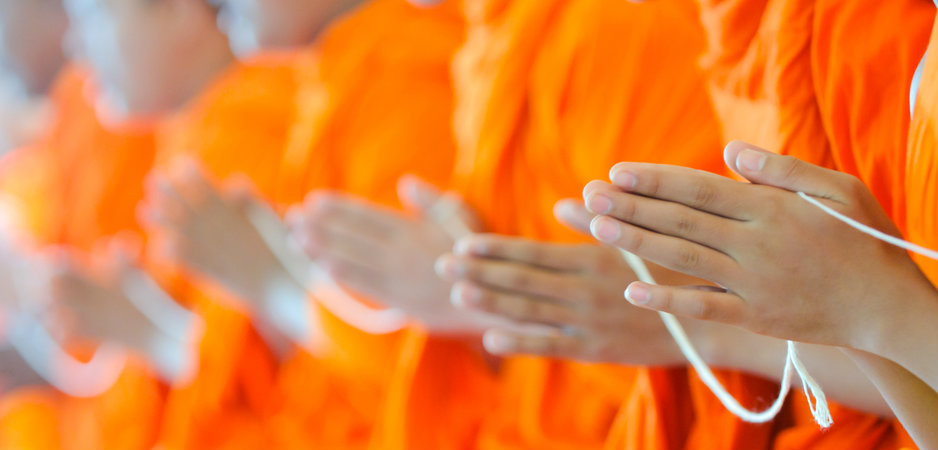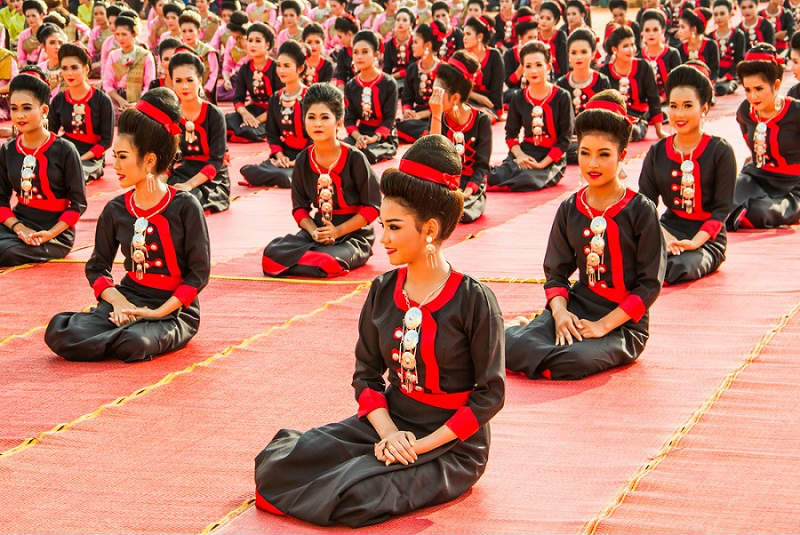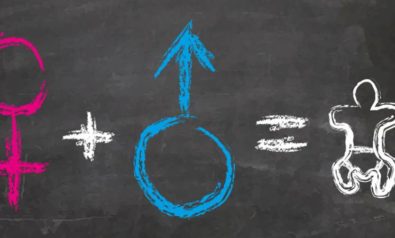Those who join the Buddhist monastic order submit to an ethical code that aims to drive out lust, ill will and infatuation.
According to the Vinaya Pitaka, the Buddha laid down the first rule for his monastic followers in response to the behavior of a monk named Sudinna, who gave in to his mother’s pleas to sire a male heir with his former wife to replace himself so that the family fortune would not fall to others. That the first rule has to do with sexual intercourse speaks to the primacy of sexual matters in Buddhist doctrine and ethics.
This leads the Buddha to establish the monastic disciplinary code – vinaya – beginning with the first parajika rule (meaning “defeat,” as in being defeated by sensual desire), commission of which results in automatic forfeiture of monastic status: “Whatever monk should indulge in sexual intercourse is one who is defeated [parajika], he is no longer in communion [with the monastic order].”
But the issue goes even deeper than the act per se, to what sexual intercourse symbolizes for Buddhism doctrinally and what it means ethically in a monastic context. As Janet Gyatso explains, sexual intercourse is considered the “gold standard” for determining monastic sexual misconduct, since “what really made sex with a woman worse than any other kind was its practical upshot: marriage, children, the householder’s life; in short, samsara [the tanha-driven or desire-driven cycle of lifetimes].” “To have a house,” the commentary explains, “means to plough fields, to sow seeds, to make purchases and sales and such other various kinds of affairs.” The “houseless state means to have no such kinds of affairs, but to have perfect calmness and to have no desire.”
The Monastic Ethical Code
Those who join the Buddhist monastic order submit to an ethical code (the primary usage of the word vinaya) that will drive out or remove the lust, ill will, infatuation and other obstacles to liberation that characterize a tanha-driven life. The vinaya code is vigilant in ensuring that the ethical conduct of monks and nuns remains beyond the reproach of the laity, whose own behavior conforms to a lower ethical standard. The Buddha condemned Sudinna’s act of sexual intercourse as “village dhamma” and “low dhamma,” which contravened his own dhamma (teaching) about the holy or religious life (brahmacariya).
The vinaya created an institutional body of fulltime Path followers, subject to public scrutiny. The refrain that behavior like Sudinna’s is both unbefitting the order and scandalous to the laity runs throughout the parajika sections of the Vinaya Pitaka. Significantly, the parajika rules specify that a defeated monk is no longer in communion, which is explained in this way: “[C]ommunion is called one work, one rule, an equal training, this is called communion. He who is not together with this is therefore called not in communion.”
The section of the Vinaya Pitaka that deals with the first parajika rule is full of “spicy anecdotes,” to quote Bernard Faure’s diplomatic phrase. The Pali Text Society’s translator in 1938, I.B. Horner, considered some passages so embarrassing to reader sensibilities that she relegated them to an untranslated appendix. Virtually every conceivable permutation of sexual behavior is covered here — Bapat and Hirakawa’s undiplomatic phrase is “all sorts of imaginable perverted types of sex-acts” — leading scholars to question whether the text reflects actual cases in the early Buddhist order, casuistic anticipation of potential misdeeds or a combination of both.
Although it may be tempting, we should not conclude that ancient Buddhist monastics were more sexually depraved than other monastics, only that Buddhist doctrines compelled them to a vigorous examination of the intricacies of human sexual impulses and their implications for a celibate community.
Various Penalties for Infractions
The text lays out four levels of offense with decreasing penalties:
1) Parajika entails automatic surrender of monastic status
2) Sanghadisesa requires a formal meeting of the order to decide the appropriate disciplinary measures
3) Thullaccaya (a grave offense)
4) Dukkata (a wrongdoing) call for confession by the perpetrator
A monk commits parajika if he engages in consensual penetration of various orifices of a living female (human, animal or spirit), a person with non-conventional sexual characteristics, another monk or even himself (cases of one monk’s supple back and another’s pliable penis are cited).
It does not matter what the monk is wearing, whether monastic robes, lay garb, or any number of comical garments described in the text – such acts are parajika if consensual. If there is no consent, as when a woman satisfies herself by sitting on the erect penis of an unaware monk or when monks or nuns are forced to perform against their will, there is no offense. Penetration of a partially decomposed corpse is also parajika, but penetration of an almost fully decomposed corpse is only thullaccaya, a third level offense, while use of a plaster decoration or a wooden doll counts as dukkata, the lowest offense.
All of these sexual behaviors, if consensual, intend to satisfy the perpetrator’s desires. The commentary stresses this as one criterion for distinguishing parajika from lesser offenses: The presence of passion, pleasure or delight generally tips the scales toward parajika. Another criterion seems to appeal to the “gold standard” of sexual intercourse with a living human female, which draws the perpetrator back to householder status and a tanha-driven cycle of lifetimes. Thus, penetration of a human vagina and similar orifices is parajika, the latter perhaps seen as slippery slopes, so to speak, toward the former, whereas a wooden doll or a badly decomposed corpse is further removed from such temptation.
The Problem of Desire
Whether or not we can decipher the logic behind all the permutations of proscribed sexual behavior in the Vinaya Pitaka, it is clear that desire is the overriding problem being addressed at the individual level. Mohan Wijayaratna points to a non-vinaya text, the Methuna Sutta, that clarifies the full meaning of monastic chastity. There the Buddha criticizes purported religious virtuosi “who pretend to practice chastity” by refraining from sexual intercourse yet “consent to be massaged, rubbed, bathed and shampooed by women.” Wijayaratna notes: “[F]or Buddhist monasticism, abstention from sexual intercourse did not suffice to define chastity; involvement in any kind of sensual pleasure was thought to be a ‘fetter of sexuality.’ Sexual intercourse constituted thus only one subsection of ‘the desire for sensual pleasures.’”
The vinaya code differs for nuns, reflecting the patriarchal era in which the rules were first promulgated and then interpreted. The Buddha initially hesitated to establish an order for nuns but eventually set out Eight Important Rules for them that did not apply to the order of monks, such as requiring a nun to show deference to all monks, even those with less monastic tenure than the nun (monks show deference only to other monks with longer tenure). Nuns also have extra parajika rules on sexual behavior beyond the prohibition of sexual intercourse that apply equally to monks. These extend to physical contact with a man or making preparations for such physical contact out of sexual desire, which would be lesser offenses if committed by a monk.
Householder Sexual Ethics
The Buddha valorized the celibate life over family life, as we read in the Anguttara Nikaya: “Monks, there are two kinds of happiness. Which are they? The happiness of domestic life and that of monastic life. Of the two, the happiness of monastic life is superior.” A symbiotic relationship between the monastic order and lay adherents has characterized Buddhism from the beginning, with a dual sexual ethical track, as Peter Harvey explains: “Buddhism has traditionally held celibate monasticism in the highest regard, but it has also seen marriage and family life as highly suitable for those who cannot commit themselves to celibacy, and as an arena in which many worthwhile qualities are nurtured.”
Wife and husband should “minister” to each other in certain gender-specific ways — for instance, the husband should provide his wife with jewelry and other personal adornments, the wife should manage her husband’s earnings and the household affairs – but both are expected to be faithful to the marriage. Walpola Rahula comments: “[L]ove between husband and wife is considered almost religious or sacred. It is called sadara Brahmacariya, ‘sacred family life.’”
Even so, given the Buddha’s views on householder life, marriage never took on sacramental connotations in Buddhism, and thus marriage ceremonies and divorce proceedings are typically considered civil matters in Buddhist societies. Monogamous marriage is the norm in Buddhism, which can extend beyond a single lifetime: “[A] husband and wife, if matched in trustful confidence, virtue, generosity and wisdom, will be reborn together if they wish.”
Expectations and Procreation
The Third Precept, one of five basic moral vows incumbent upon all Buddhists, is interpreted according to one’s station in life. The precept reads, Kamesu micchacara veramani sikkhapadamsamadiyami, “I take upon myself the precept of abstention from sexual misconduct.” The Anguttara Nikaya explains that a virtuous marital relationship is like a marriage between deities, while an adulterous spouse is likened to a corpse. “Young unmarried people should wisely restrain themselves,” writes a contemporary monk about the Third Precept, “and not get involved in anything which may prove a bondage for them. Restraint is good, and it should be restraint not merely of outward action but of lustful desire.”
Again, Buddhism’s concern about desire (tanha) surfaces, now in the context of the laity. Note the following explanation of Buddhism’s perspective on procreation by a Buddhist bioethicist: “Union of man and woman or two physical bodies in sexual action is the result of this desire (tanha) to gratify the senses, including the mind. Even the need to have a child is an extension of the same major desire (tanha). Thus, no particular significance is attributed to procreation in Buddhism.”
Non-Conventional Sexual Categories
The familiar characterization of Buddhism as the most benign of the major world religions in its view of homosexuality may be correct per se, but it masks the complexity found in Buddhist texts, history and cultures. The ancient texts use terms that do not easily translate into modern equivalents. According to Leonard Zwilling, the Pali word pandaka and synonymous terms “are to be interpreted metaphorically as we do in English when it is said of a weak or pusillanimous person that he (or even she) ‘has no balls.’” The word pandaka typically refers to males who lack conventional qualities of “maleness,” such as those who suffer temporary impotence, satisfy their own sexual desires by watching others engage in sexual behavior or fellate other men.
The Buddha forbade the ordination of a pandaka into the monastic order and required the expulsion of one discovered after ordination. This kindof avoidance was not limited to pandakas, as hermaphrodites (ubhatobyanjanakas) were also excluded from the monastic order, for instance. As Zwilling explains, the vinaya code sought to maintain distance between the monastics and anyone who threatened their chastity, which also included female prostitutes and lay women. Homosexual behavior is condemned in the vinaya code, but it draws far less attention than heterosexual behavior, perhaps simply because of the prevalence of the latter. Either way, the sexual desire underlying the behavior is the primary issue.
Some Buddhist texts and commentaries approximate what would be considered sexual phobia today. The Milindapanha (1st century BCE – 1st century CE), for instance, counts pandakas and hermaphrodites among those incapable of fully understanding the Buddha’s teachings, while the commentators Vasubandhu (4th century CE) and Buddhaghosa (5th century CE) considered them morally and spiritually deficient. One Mahayana text predicts “endless varieties of punishments … for the wrong deed of sexual intercourse between two men. The one who commits misconduct with boys sees boys being swept away in the Acid River who cry out to him, and owing to the suffering and pain born of his deep affection for them, plunges in after them.” Here, phobia mixes with a measure of compassion. A common Buddhist explanation for homosexuality and other non-conventional sexual categories sees them as the karmic results of misdeeds in previous lifetimes.
Positive Portrayals
On the other hand, there are more positive textual portrayals of homosexuality. The medieval Japanese literary genre called chigo monogatari extols love relationships between elder monks and temple boys. These tales often include tragic deaths; and the practice conduced to “massive child abuse,” in Bernard Faure’s judgment, but the intended goal was spiritual redemption. In one tale called Chigo Kannon engi, a female bodhisattva (an enlightened and compassionate spiritual being) takes the role of a young male lover in order to show a monk the way to liberation. In the opinion of one scholar, “this text suggests a kind of sanctification of homosexual relationships within the Buddhist community.”
Indeed, sentiment about homosexuality varies across Buddhist societies, from “unenthusiastic toleration” in many contexts, to condemnation (without persecution) in some contexts, to “positive advocacy” in Japan.
The Dalai Lama, whose opinion weighs heavily with American Buddhists, has expressed the condemnatory position on homosexuality from traditional Tibetan Buddhism. In a 1997 visit to San Francisco, for instance, he made a distinction between Buddhist and societal viewpoints: “From a Buddhist point of view, men-to-men and women-to-women is generally considered sexual misconduct. From society’s viewpoint, mutually agreeable homosexual relations can be of mutual benefit, enjoyable and harmless.”
As Peter Harvey reports, “This concerned some liberal American Buddhists, especially gays, who had thought that Buddhism was non-judgemental on sexual matters.” Subsequent discussion between the Dalai Lama and a group of American Buddhists led to some rapprochement as the Dalai Lama intimated that since Buddhist sexual ethics arose in an ancient cultural context, they could be reassessed today.
The legacy of pain for many ex-Christian gays palpably informs their testimonies about their newfound sexual and spiritual integration through Buddhism. Wrote the late Roger Corless, scholar of Buddhism and gay Buddhist, “Many find that a spiritual community is more nurturing than a club or a bar and, having been deeply wounded by their contact with Christian homophobia, feel they have found a home in the Buddhist sangha.”
*[A longer version of this article was originally published in The Journal of Theology: Dialog.]
We bring you perspectives from around the world. Help us to inform and educate. Your donation is tax-deductible. Join over 400 people to become a donor or you could choose to be a sponsor.
The views expressed in this article are the author’s own and do not necessarily reflect Fair Observer’s editorial policy.
Photo Credit: Somchai Siriwanarangson / Amnartk / KK-Foto / Visun Khankasem / Shutterstock.com
Support Fair Observer
We rely on your support for our independence, diversity and quality.
For more than 10 years, Fair Observer has been free, fair and independent. No billionaire owns us, no advertisers control us. We are a reader-supported nonprofit. Unlike many other publications, we keep our content free for readers regardless of where they live or whether they can afford to pay. We have no paywalls and no ads.
In the post-truth era of fake news, echo chambers and filter bubbles, we publish a plurality of perspectives from around the world. Anyone can publish with us, but everyone goes through a rigorous editorial process. So, you get fact-checked, well-reasoned content instead of noise.
We publish 2,500+ voices from 90+ countries. We also conduct education and training programs
on subjects ranging from digital media and journalism to writing and critical thinking. This
doesn’t come cheap. Servers, editors, trainers and web developers cost
money.
Please consider supporting us on a regular basis as a recurring donor or a
sustaining member.
Will you support FO’s journalism?
We rely on your support for our independence, diversity and quality.




















Comment